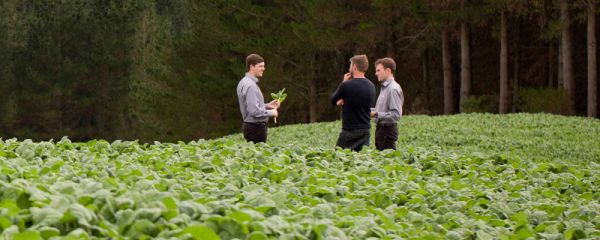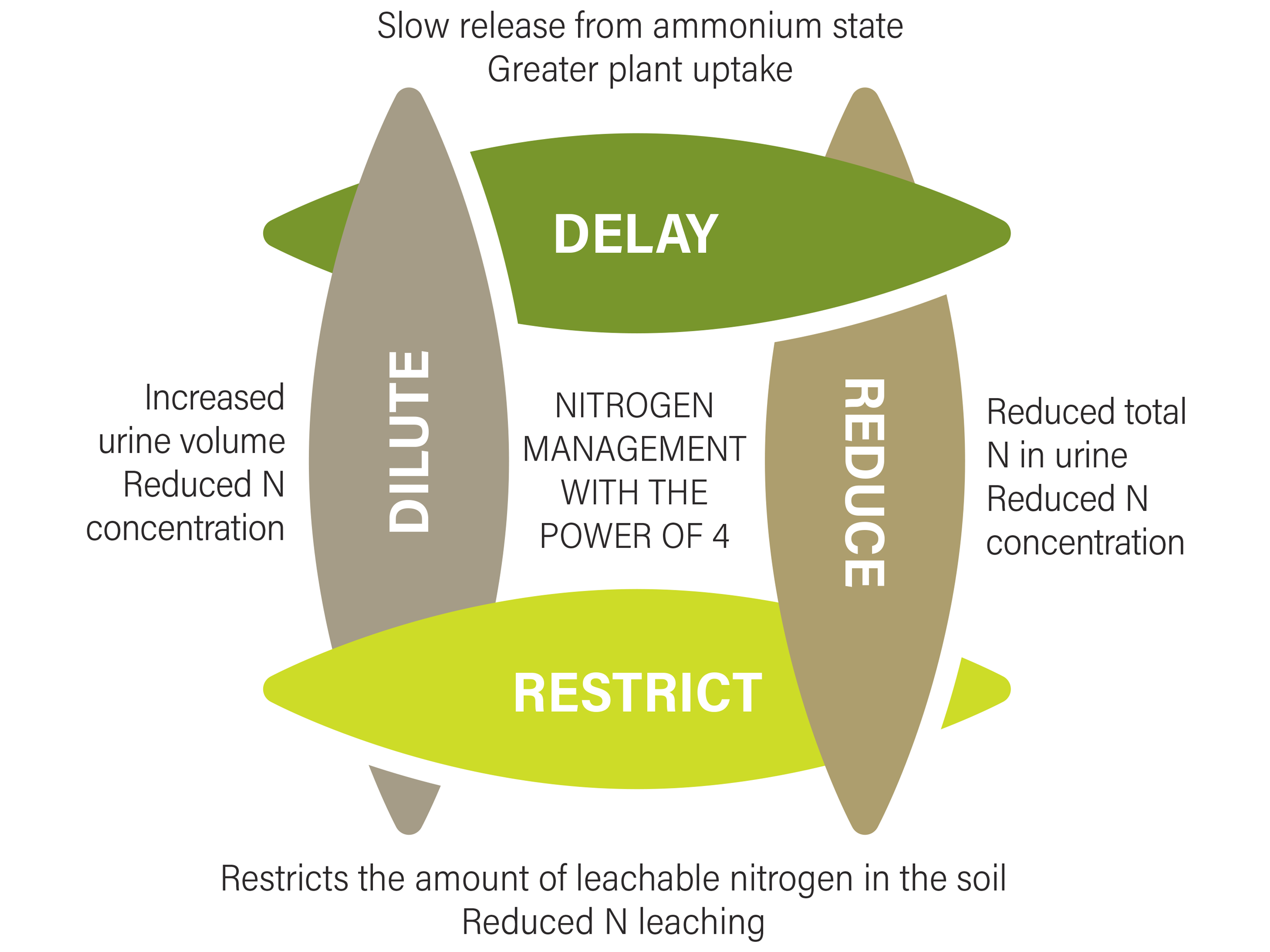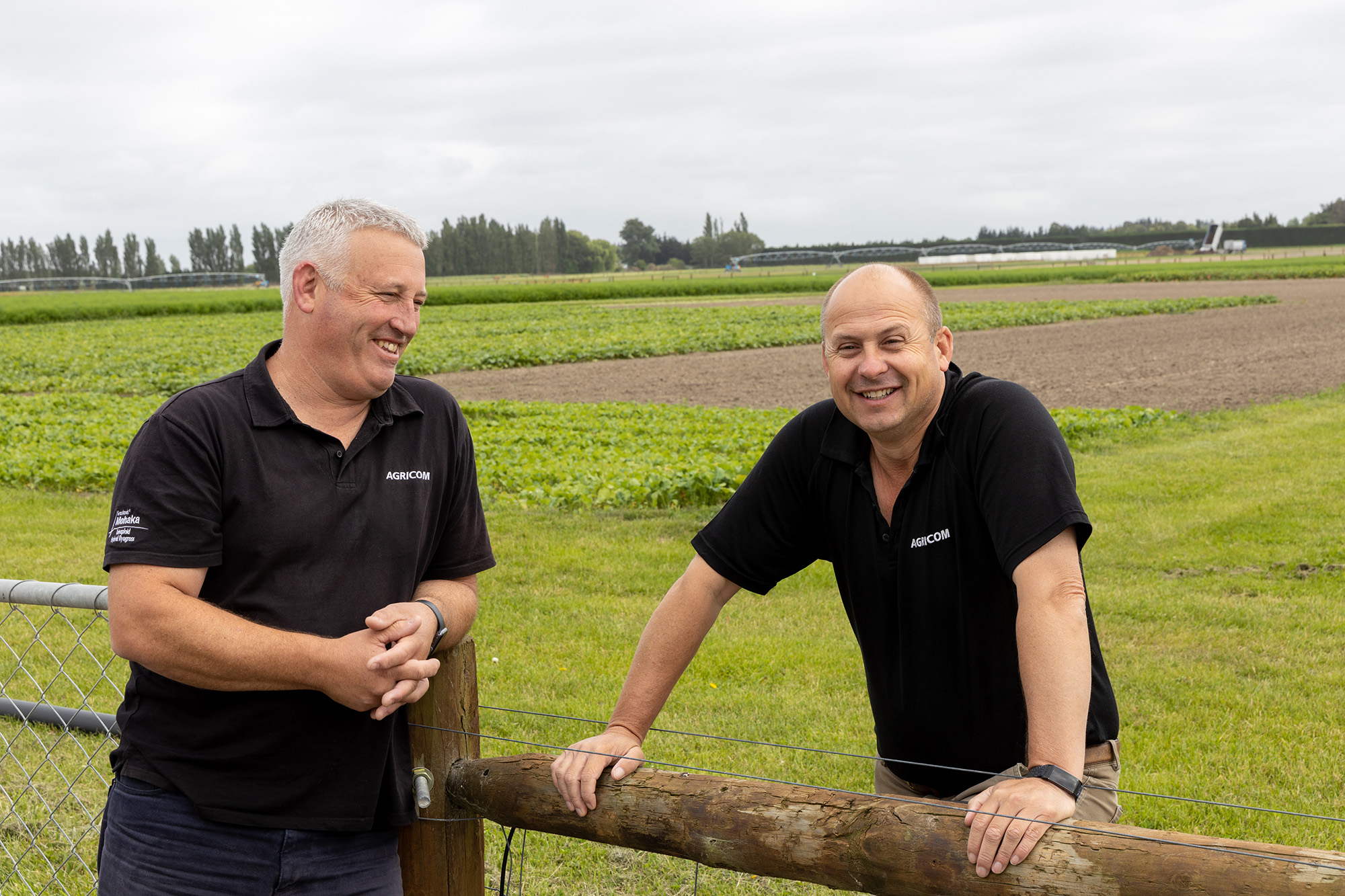Ecotain® environmental plantain management
Optimal grazing management for Ecotain® environmental plantain is similar to ryegrass.
- Ecotain contributes to DM production in all dairy based grazing rotations and is capable of round lengths of 14-30 days.
- Ecotain contributes to DM production in sheep systems, particularly under rotational grazing, but is tolerant to periods of set stocking.
- Avoid grazing rotations in late spring and summer extending beyond 25 days as this may lead to lignified stem and seedhead.
- In these situations a build-up of stem increases the dead material which may lead to increased disease loading, impacting on plant persistence. It can also increase the risk of plantain moth in drier months.
Grazing management
Plantain is highly palatable and often the preferred plant species for grazing. However, there are situations where plantain palatability becomes an issue due to one of three situations that can develop on farm:
- Plantain can become less palatable when in advanced (hardened) seedhead stage or
- Plantain can become less palatable with low to very low plant nitrogen status or
- When grazing rounds become too long and plantain leaves are not grazed.. These leaves may not go brown for many months. This leads to "old" leaves with low nutritional value, which become "green skeletons". These leaves attract disease and shorten the life of the plant
Plantain is one of the few species that can be managed on a similar rotation length as perennial ryegrass, making it a good fit for the majority of farm mixes. Milksolids performance for plantain has been reported as the same as for ryegrass most of the year, while in hot summers with adequate moisture there have been milk production advantages to plantain over ryegrass.
PURE SWARDS
Establishment will be improved if it is first grazed when it has reached the 6-8 true leaf stage.
For future grazings in plantain dominant swards, graze plantain between 18 and 25 days from spring to autumn when plantain reaches 25 cm height.
MIXED SWARDS
When established in a ryegrass mix, graze as soon as plants pass the pull test and before the plantain (and clover if planted) will be affected by shading from the ryegrass, around when plantain has two true leaves.
For the second grazing in a mixed sward, graze when the plantain plant has 6 true leaves.
In plantain dominant swards, follow the usual ryegrass grazing rules of pre-graze of around 2800 kg DM/ha per hectare down to an even residual of around 1500 kg DM/ha.
GENERAL MANAGEMENT
Palatability of the seedhead declines from around 18 days after emergence. This can be tested by pinching down the seedhead stem until it is hard. At 18 days, the seedhead is soft down the majority of its length. For every day after 18, the seedhead lignifies around 1 cm a day and by day 28, the seedhead stem is completely lignified and unpalatable. If a large amount of seedhead is left in pasture, it needs to be topped to improve future quality and palatability.
If plantain is rejected at grazing it is important to reset the pasture or stand by topping, as the cows will not eat this rejected material at a future grazing. Leaving too much stem and allowing dead material to build up in plantain stands will also lead to plant loss later in the season due to fungal pathogens and plant disease, as well as low palatability.
Topping may also be required to control weeds, e.g. docks or thistles.
Key seasonal management decisions
LATE SPRING/SUMMER
- Topping may be necessary in December after seedhead, and again in the autumn to reset quality feed
- Loss of palatability can occur in the second year due to low N status; top and apply nitrogen to rectify
- Graze plantain frequently in summer if moisture is not limiting, even when ryegrass growth is slowing due to higher temperatures
AUTUMN
- Plantain only has a small taproot, so in the autumn it does not need a long spell to build up root reserves like lucerne. Rotation length only needs to be extended by 3-5 days in late autumn
- In autumn, plantain can suffer from insect attack such as porina or plantain moth. Consult an agronomist to determine the best options for control
WINTER
- Over winter, in a mixed pasture, plantain can get grazed too frequently as the grazing interval is dictated by ryegrass that has higher winter growth rates than plantain
- In pure plantain crops, the rotation over winter is extended to 40 days+ grazing intervals (depends on winter soil temperatures) due to its slower growth and taking longer to reach 25 cm grazeable height

Our Herbs Range
VIEW PRODUCTS


